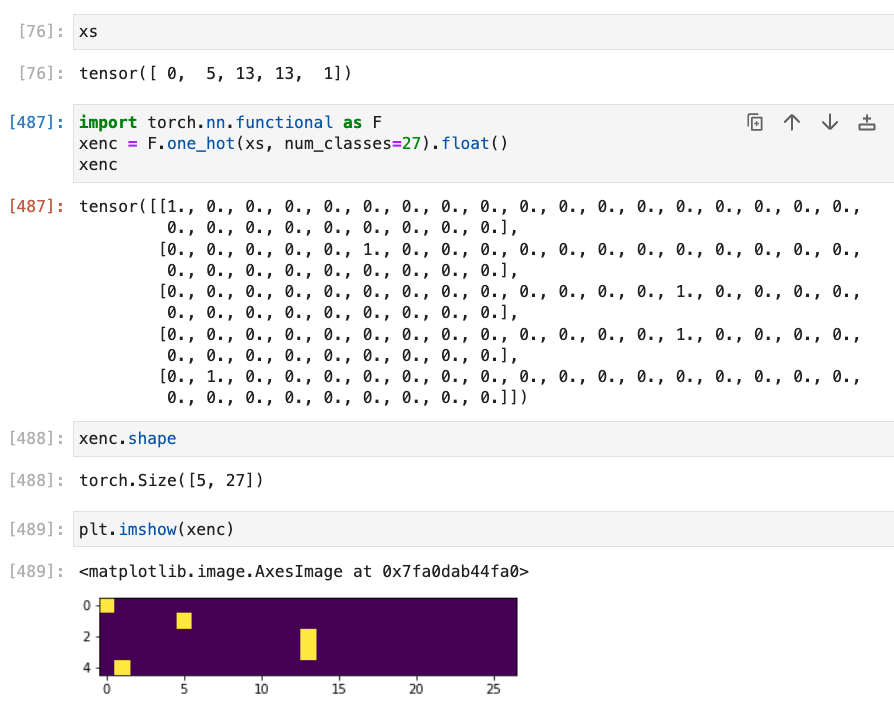Andrej Karpathy-MakeMore
2.5 hr video of MakeMore.
1. Python tricks
- Counter with dict without if/else
d = {} d['key'] = d.get('key', 0) + 1 - Set random seed in Torch
# Fixed rand by manual seed g = torch.Generator().manual_seed(2147483647) p = torch.rand(3, generator=g) p = p / p.sum() p # sampled from the p distribution torch.multinomial(p, num_samples=100, replacement=True, generator=g) - Broadcasting semantics
# Line up dims from the trailing dim, and check if they are either # - equal # - 1 (will be duplicated to match) # - none (will be changed to 1, then match) P = (N+1).float() # 27x27 P /= P.sum(1, keepdims=True) #27x1 # Following operation is wrong # line up the last dimention FIRST # (27x27)/(27) -> (27x27)/(1,27) P /= P.sum(1) #keepdims default=False - Plot a square figure
plt.imshow(N, cmap='Blues') for i in range(dim): for j in range(dim): plt.text(j, i, 'strb', ha="center", va="bottom", color='gray') plt.text(j, i, 'strt', ha="center", va="top", color='gray')
2 Neural Network Setups
-
Maximum Likehood Estimation
GOAL: maximize likelihood of the data w.r.t. model parameters (statistical modeling)
equivalent to maximizing the log likelihood (because log is monotonic)
equivalent to minimizing the negative log likelihood
equivalent to minimizing the average negative log likelihoodfor ix1: for ix2: prob = P[ix1, ix2] logprob = torch.log(prob) log_likelihood += logprob nll = -log_likehood -
One hot encoding
Convertone_hottofloat()!

- logits and softmax
# 5x27 @ 27x27 -> 5x27 logits = xenc @ W # Interpreate as log-counts counts = logits.exp() # counts table, equivalent N probs = counts / counts.sum(1, keepdims=True) #normalized counts table ## the last 2 lines are actually softmax :) - loss and weight update
This is similar to MicroGrad# retrieve 5 prob values from probs table loss = -probs[torch.arange(5), ys].log().mean() # backward pass # W = torch.randn((27, 27), generator=g, requires_grad=True) # set True for required_grad # W.grad.shape == W.shape W.grad = None # set to zero the gradient loss.backward() # cals all the W.grad # update weights W.data += -0.1 * W.grad
3 Notes
- The weights $W$ eventually will converge to the log counts table $N$ b/c no more information we get from the NN rather than counts
- Adding the counts
P = (N+1).float()would leads to smooth of the distribution. - Add regularization term
0.01 * w**2.mean()